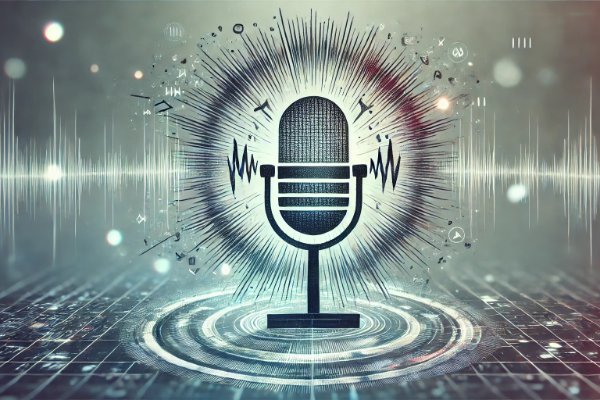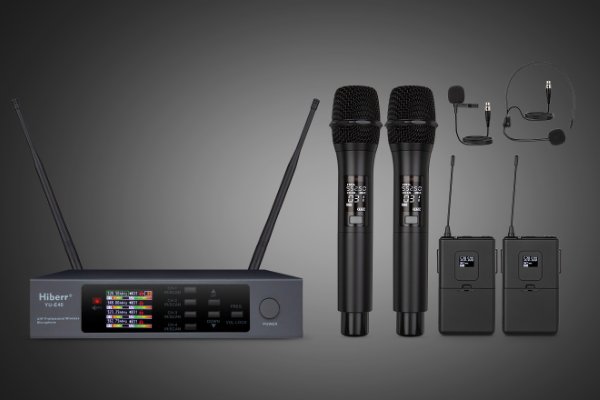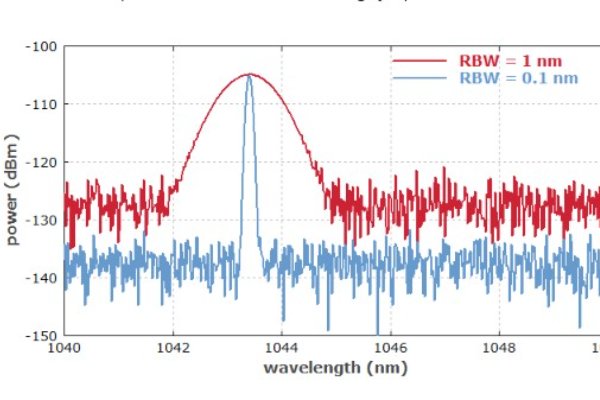Recent Posts
-
How to Reduce Wireless Microphone Background Noise
Wireless microphones are a popular choice for a variety of events, from speeches and church services to performances and presentations. However, background noise can often be a major issue. If you're struggling with unwanted noise, here are some effective tips to help you reduce wireless microphone background noise and improve your audio quality.
03/01/2025
-
Hiberr Microphones: Leading the Charge in Modern Audio Solutions
Microphones are more than just tools—they're instruments of communication, creativity, and collaboration. Hiberr, with its innovative designs and commitment to quality, is poised to redefine the audio landscape for the digital age.
10/08/2023
-
Understanding the Evolution and Importance of the Wireless Microphone
Understanding the Evolution and Importance of the Wireless Microphone in Modern Times
10/06/2023
-
Understanding Microphone Differences: Hosts vs. Singers
When choosing a microphone, understanding its primary use is essential. The difference between microphones tailored for hosts and those for singers is quite stark.
09/28/2023
-
What affects the receiving distance of uhf wireless microphone? How to solve?
Long-distance wireless microphone systems are pivotal in various events and settings. Their performance, however, can be affected by a myriad of factors. Understanding and addressing these factors can optimize your microphone's receiving distance. Here's a breakdown:
09/23/2023
-
What is the signal-to-noise ratio of a microphone?
The Signal-to-Noise Ratio (SNR) of a microphone measures the ratio between the desired audio signal and the undesired background noise inherent in the microphone. Essentially, it quantifies how much clearer the desired sound is compared to the background noise. It's typically expressed in decibels (dB). In the context of microphones, SNR often refers to the difference between the microphone's sensitivity and its self-noise or equivalent noise level.
09/22/2023
What is the difference between the two transmission methods of digital signals and analog signals in UHF microphones?
UHF (Ultra High Frequency) microphones operate in the UHF spectrum, typically between 300 MHz and 3 GHz. When it comes to the transmission methods, UHF microphones can use either analog or digital techniques to send sound signals. Both methods have their advantages and disadvantages, and the choice often depends on the specific needs of the user.
Here's a breakdown of the differences between the two transmission methods:
Analog UHF Microphones:
Modulation: Analog microphones modulate the audio signal onto a carrier wave. FM (Frequency Modulation) is a common modulation method for analog wireless microphones.
Sound Quality: The sound quality can be very good, but it is susceptible to interference, noise, and distortion, especially at the limits of their operating range or in environments with many competing signals.
Latency: Analog systems typically have very low latency.
Frequency Use: Analog microphones require more bandwidth than digital ones. Also, as the available spectrum becomes more crowded, it becomes harder to find clear channels for analog transmission.
Battery Life: Analog transmitters tend to consume more power, which can lead to reduced battery life compared to digital systems.
Digital UHF Microphones:
Modulation: Digital microphones convert the audio signal into a digital format before transmission. This digital data is then modulated onto a carrier wave.
Sound Quality: Digital microphones can provide consistent sound quality that is often clearer and more accurate than analog. Since the signal is digital, it can resist interference and noise up to a point (known as the "digital cliff"). Once the signal drops below this threshold, however, it can be lost entirely.
Latency: Digital systems can introduce some latency due to the analog-to-digital conversion process. However, advanced systems have managed to reduce this latency to imperceptible levels for most applications.
Frequency Use: Digital microphones can utilize the available spectrum more efficiently, sometimes allowing for more microphones to operate simultaneously in the same space.
Battery Life: Digital transmitters can be more energy-efficient, leading to longer battery life in some cases.
Encryption: One advantage of digital systems is the ability to encrypt the signal, which can provide security against eavesdropping.
Which One to Choose?
The choice between analog and digital UHF microphones depends on the specific requirements of the situation:
For live performances where latency and natural sound reproduction are critical, some professionals still prefer analog systems.
For situations where sound clarity, resistance to interference, and efficient frequency use are priorities, digital microphones can be the better choice.




